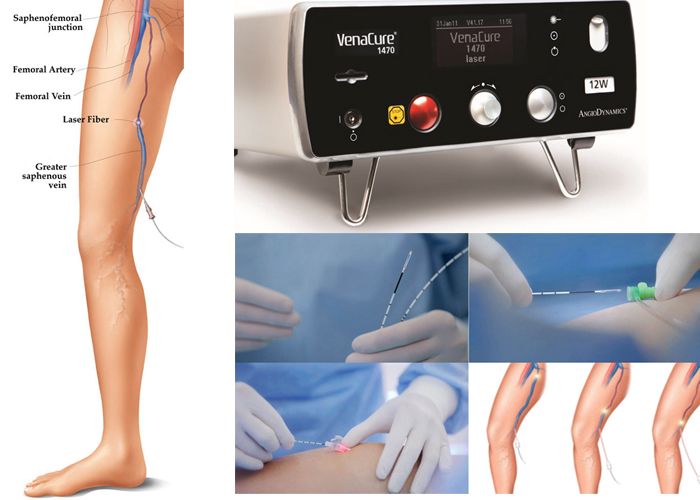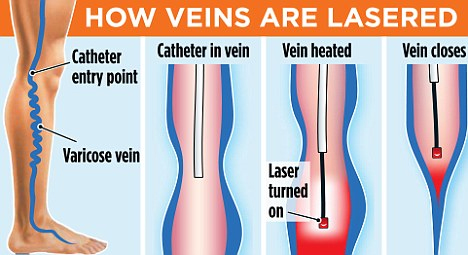What is best treatment for varicose veins
As with the best traditional surgical techniques Interventional Radiological techniques aim to cure the problems by tackling the underlying cause. This entails elimination of the reflux and removal of incompetent veins and unsightly surfaced varicose veins. What is best treatment for varicose veins
This is most commonly achieved with surgery by tying the main superficial vein and its branches at the groin, stripping the main superficial vein and picking out any small unsightly varices which remain.
This common operation though very successful and until recently widely accepted as the best treatment available is far from perfect.
General anaesthesia and some hospital stay are required some complications like bruising, infection, scars, numbness etc can occur, time off work is necessary and the symptoms often recur.
interventional Radiological techniques also eliminate reflux and remove incompetent veins and superficial varices just like surgery but, by being performed under image guidance using microinstruments through tiny pinhole incisions,
this is achieved as an outpatient, without anaesthetic cuts or scars, with excellent success rates and patient satisfaction and instant return to work and other activities.
The main difference in technique between our minimally invasive treatments and surgery is that in the latter the main superficial vein (great saphenous) is stripped out and removed altogether whereas in our methods the vein is totally destroyed ‘in-situ’ (where it lies).
The outcome is the same but the destruction can be achieved very much more easily than the removal.Interventional radiologists now use three main methods of vein destruction; Endovenous laser (EVLT), RF ablation and foam sclerotherapy.
Although some doctors treat large veins by injections (foam sclerotherapy) the results are not as effective or as durable as either EVLT or RF ablation. Foam sclerotherapy is useful for any residual varicosities remaining at follow-up after either the EVLT or RF ablation treatment.
Both techniques rely on accurate preop mapping of anatomy and blood flow by colour duplex ultrasound and use of ultrasound to guide the instruments during the procedure.
You lie down on a couch with head up slightly the skin over your leg is cleaned with antiseptic solution and sterile drapes placed over your leg. A small injection of local anaesthesia will be given to numb the skin over the inside of your knee.
A small sheath ( thin walled plastic tube ) is inserted into the vein to be destroyed usually just below the knee. Using an ultrasound image to guide the instruments the doctor then places a laser fibre or RF catheter through the sheath and up to the vein in the groin.
Local anaesthetic solution is then carefully injected around the vein along its whole length. The power is then turned on and the fibre/catheter slowly withdrawn.
Once the length of the vein has been treated the sheath is withdrawn, a compression stocking will be applied and after a cup of tea you are allowed to leave, take a fifteen minute walk and get back to normal activities.


